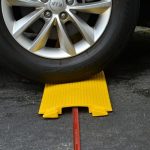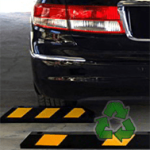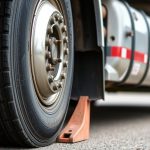Introduction
Purpose of the article
The purpose of this article is to provide an overview of the legal requirements for installing speed bumps in Dallas. Speed bumps are an effective traffic calming measure that can help reduce speeding and improve safety on residential streets. However, installing speed bumps requires compliance with certain regulations and guidelines set forth by the city of Dallas. This article aims to clarify these requirements and provide guidance for those considering installing speed bumps in their neighborhood.
Importance of speed bumps
Speed bumps play a crucial role in ensuring the safety of pedestrians and drivers on the roads. They are particularly important in areas with high foot traffic, such as schools, hospitals, and residential neighborhoods. Speed bumps help to slow down vehicles and reduce the risk of accidents, especially in areas where drivers tend to speed. Additionally, they can help to reduce noise pollution and improve the overall quality of life in communities. By installing speed bumps, cities like Dallas can create safer and more livable environments for their residents.
Overview of legal requirements
In Dallas, the installation of speed bumps is regulated by the City’s Department of Transportation. Before installing speed bumps, property owners must obtain a permit from the Department of Transportation and comply with all applicable regulations. The Department of Transportation requires that speed bumps be installed in accordance with the City’s specifications, which include minimum and maximum dimensions, placement requirements, and signage requirements. Additionally, property owners must ensure that the speed bumps do not impede emergency vehicles or cause damage to vehicles. Failure to comply with these regulations can result in fines and legal action.
City of Dallas Regulations
Permit requirements
In Dallas, obtaining a permit is a crucial step in installing speed bumps. The permit application must be submitted to the Department of Transportation, and it should include a detailed plan of the proposed speed bump location, dimensions, and materials to be used. The application fee varies depending on the number of speed bumps to be installed. Once the application is approved, the installation must be completed within 90 days. Failure to comply with the permit requirements may result in fines or removal of the speed bumps. It is important to note that the permit is only valid for a period of five years, after which it must be renewed.
Design specifications
Design specifications for speed bumps Dallas Texas are outlined in the City of Dallas Traffic Control Manual. The manual specifies that speed bumps should be 3 to 4 inches in height and 12 to 14 feet in length. The width of the speed bump should be the same as the width of the roadway, with a maximum width of 12 feet. The slope of the speed bump should not exceed 10 percent, and the distance between speed bumps should be at least 100 feet. The manual also specifies that speed bumps should be painted with reflective paint and marked with appropriate signage to ensure visibility and safety for drivers.
Installation guidelines
Once the decision to install speed bumps has been made, it is important to follow the installation guidelines set forth by the city of Dallas. The guidelines include determining the appropriate location for the speed bumps, ensuring that they are installed at the correct height and angle, and using appropriate signage to alert drivers of their presence. It is also important to ensure that the speed bumps are installed in compliance with the Americans with Disabilities Act (ADA) to ensure accessibility for all drivers. Following these guidelines will help to ensure that the speed bumps are effective in reducing speed and increasing safety on the roads.
Maintenance requirements
Maintenance requirements for speed bumps in Dallas are crucial to ensure their effectiveness and safety. The city requires that speed bumps be inspected regularly to ensure they are in good condition and functioning properly. Any damage or wear and tear must be repaired promptly to prevent accidents or injuries. Additionally, the city mandates that speed bumps be repainted every two years to maintain their visibility and effectiveness. Property owners are responsible for ensuring that their speed bumps are well-maintained and in compliance with the city’s regulations. Failure to do so may result in fines or legal action.
State of Texas Regulations
Traffic control device laws
Traffic control device laws in Dallas dictate that speed bumps must comply with certain regulations in order to be legally installed. According to the Texas Department of Transportation, speed bumps must be no higher than three inches and no wider than twelve feet. Additionally, they must be painted with reflective markings and placed in areas where the speed limit is 25 miles per hour or less. It is also important to note that speed bumps cannot be installed on public streets without approval from the city’s transportation department. Failure to comply with these regulations can result in fines and legal consequences.
Liability issues
Liability issues are a major concern when it comes to installing speed bumps in Dallas. If a driver were to hit a speed bump and sustain damage to their vehicle or injure themselves, the city could potentially be held liable. To mitigate this risk, it is important for the city to follow all legal requirements and guidelines for installing speed bumps. This includes conducting thorough traffic studies, obtaining necessary permits, and ensuring that the speed bumps are properly marked and maintained. Additionally, the city may want to consider implementing a warning system to alert drivers of the presence of speed bumps to further reduce the risk of accidents and liability.
Insurance requirements
Insurance requirements: In addition to meeting the legal requirements for installing speed bumps in Dallas, property owners must also ensure that they have adequate insurance coverage. This includes liability insurance to protect against any accidents or injuries that may occur as a result of the speed bumps. Property owners should consult with their insurance provider to determine the appropriate coverage needed for their specific situation. Failure to have adequate insurance coverage could result in costly legal and financial consequences in the event of an accident.
Community Involvement
Neighborhood associations
Neighborhood associations play a crucial role in the installation of speed bumps in Dallas. According to the City of Dallas, neighborhood associations must submit a petition signed by at least 75% of the affected property owners in order to request the installation of speed bumps. The petition must include the proposed location of the speed bumps and the reason for the request. Once the petition is submitted, the City of Dallas will conduct a traffic study to determine if the installation of speed bumps is necessary. If the study shows that speed bumps are needed, the neighborhood association will be responsible for funding the installation and maintenance of the speed bumps. It is important for neighborhood associations to work closely with the City of Dallas and follow all legal requirements to ensure the successful installation of speed bumps in their communities.
Public hearings
Public hearings are an essential part of the process of installing speed bumps in Dallas. These hearings provide an opportunity for residents to voice their concerns and opinions about the proposed speed bump installation. The city of Dallas is required to hold public hearings before any speed bump installation can take place. During these hearings, residents can ask questions, express their support or opposition, and provide feedback on the proposed location of the speed bumps. The city takes into account the feedback received during these hearings before making a final decision on the installation of speed bumps. It is important for residents to attend these hearings to ensure their voices are heard and their concerns are addressed.
City council meetings
City council meetings are an important aspect of the process for installing speed bumps in Dallas. During these meetings, city officials and community members can voice their opinions and concerns about the proposed speed bump locations. The city council will review the proposed locations and make a decision based on factors such as traffic volume, speed limits, and safety concerns. It is important for residents to attend these meetings and provide input to ensure that the speed bumps are installed in the most effective and appropriate locations.
Conclusion
Summary of legal requirements
In summary, installing speed bumps in Dallas requires compliance with various legal requirements. These include obtaining a permit from the city, conducting a traffic study to determine the need for the speed bump, and ensuring that the speed bump meets specific design standards. Additionally, the speed bump must be properly marked and maintained to ensure the safety of drivers and pedestrians. Failure to comply with these legal requirements can result in fines and legal liability in the event of an accident. Therefore, it is essential to work with a qualified professional to ensure that all legal requirements are met when installing speed bumps in Dallas.
Importance of following regulations
It is crucial for individuals and organizations to follow the legal requirements for installing speed bumps in Dallas. Failure to comply with these regulations can result in legal consequences, such as fines and lawsuits. Additionally, improperly installed speed bumps can pose a safety hazard to drivers and pedestrians. By following the guidelines set forth by the city, individuals and organizations can ensure that their speed bumps are installed safely and effectively, reducing the risk of accidents and legal issues. It is important to prioritize safety and compliance when installing speed bumps in Dallas.
Benefits of installing speed bumps
Installing speed bumps can provide numerous benefits for communities in Dallas. One of the most significant benefits is the reduction of speeding on residential streets. Speed bumps force drivers to slow down, which can prevent accidents and increase safety for pedestrians and cyclists. Additionally, speed bumps can help to reduce noise pollution and improve air quality by encouraging drivers to drive at a slower pace. Finally, speed bumps can also help to deter cut-through traffic, which can improve the quality of life for residents in neighborhoods that experience high levels of traffic. Overall, installing speed bumps can be an effective way to improve safety and quality of life in Dallas communities.







